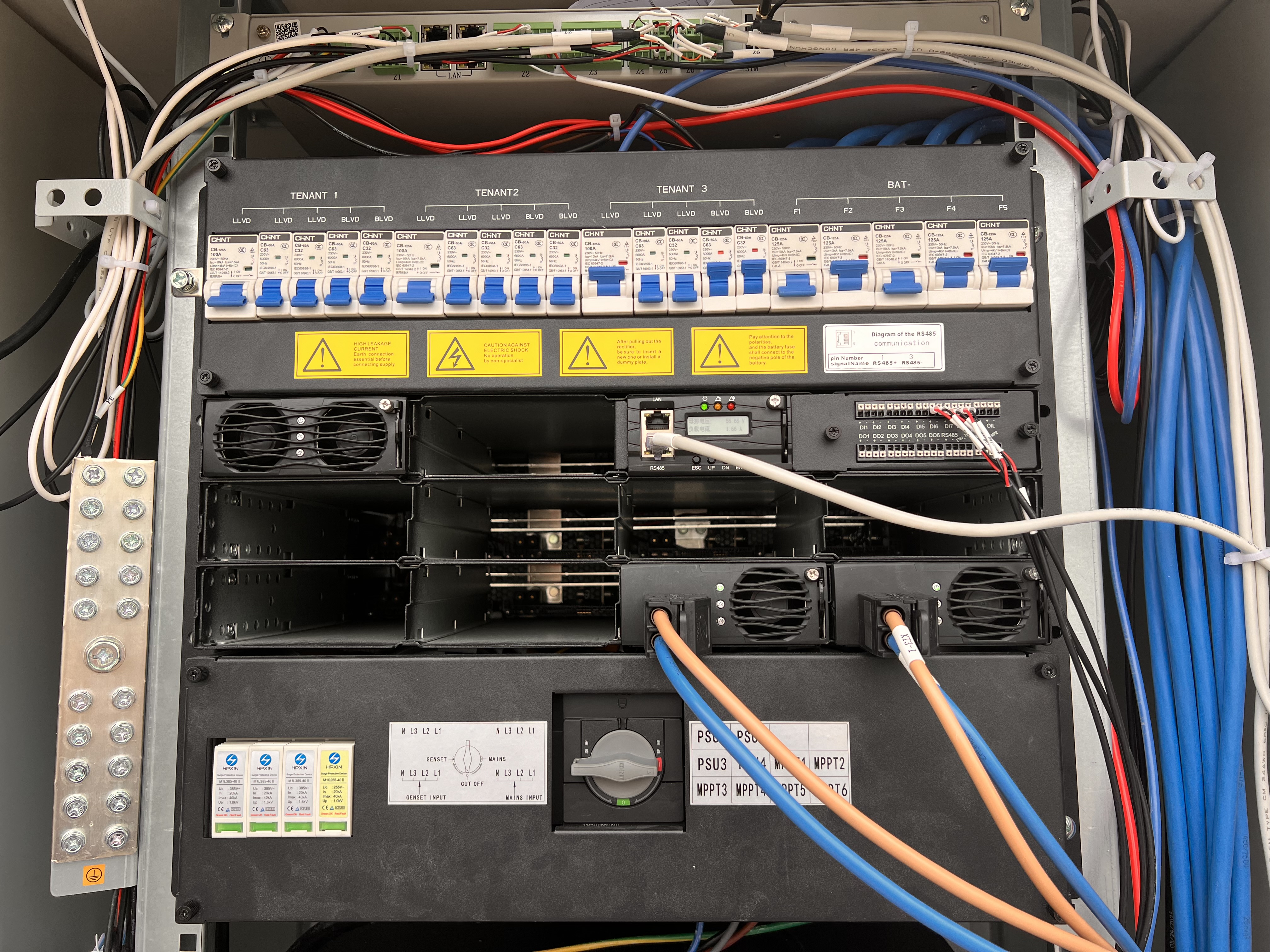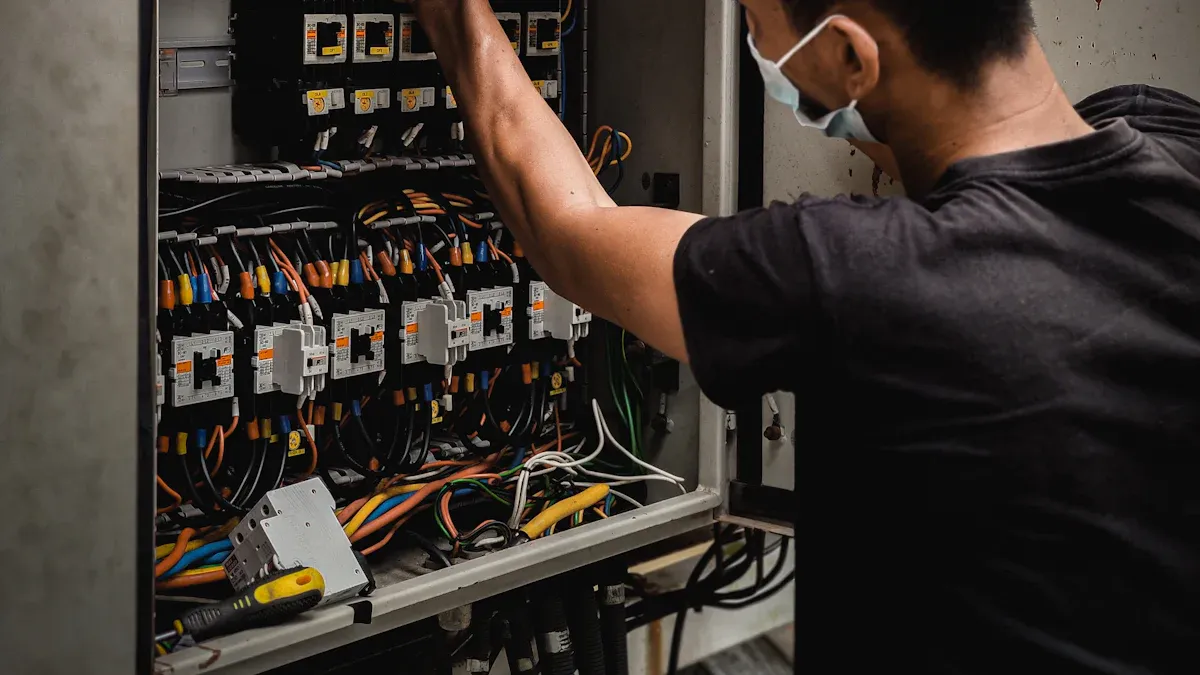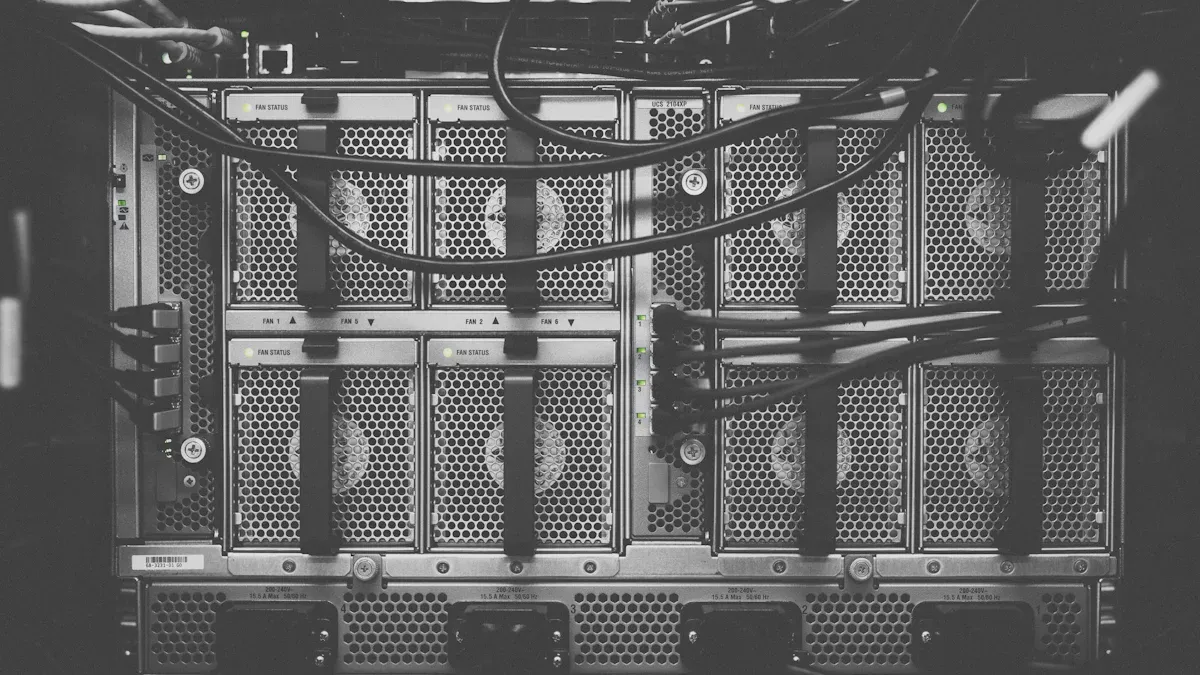ESTEL Guide to Choosing the Right Delta Rectifier Module

Choosing the right delta rectifier module keeps your power system working well. A good rectifier boosts your telecom power system's performance in different situations. Picking the wrong rectifier can lower your power system's quality, making it less efficient and durable. By selecting the right features, you can improve your system's supply and make it last longer.
Key Takeaways
Pick the best cooling method for your Delta rectifier. Fans work for hot systems, while convection is quieter.
Match the input voltage to your rectifier for best results. Wrong voltage may cause overheating or harm the device.
Check the temperature range of your rectifier. Choose models made for tough conditions to keep it working well.
Use thermal management features in new rectifiers. These features keep temperatures steady and make them last longer.
Make sure your system connects properly. Good connections improve how well your power system works.
Cooling Methods

Why Cooling Matters
Good cooling keeps your Delta rectifier module working well. Without it, the module can get too hot and fail. Overheating lowers efficiency and shortens the module's life. Too much heat can also harm your power system, making energy delivery unstable.
New Delta rectifier modules, like the LV3 Delta Module Replacement (DMR), show how better cooling improves performance. The table below compares old and new cooling features:
Feature | Old Delta Modules | LV3 Delta Module Replacement (DMR) |
|---|---|---|
Reliability Improvement | Not available | 40% |
Cooling Concept | Basic | Advanced cooling design |
Current Density | Not available | High current density |
Operational History | Not available | Since 2018 |
This table shows that better cooling makes modules more reliable. It also allows them to handle more power and last longer.
Fan Cooling vs. Convection Cooling
To pick a cooling method, know the difference between fan and convection cooling. Fan cooling uses fans to quickly remove heat. It works well for systems that create a lot of heat. But fans need upkeep and can be noisy.
Convection cooling uses natural airflow to cool down. It is quieter and needs less maintenance. This makes it good for smaller systems or quiet places. But it may not work well in very hot or high-power setups.
Selecting the Best Cooling Option
To choose the best cooling, think about your system's needs. If your system gets very hot or handles heavy loads, fan cooling is better. For quieter systems with less power, convection cooling works well.
Always match the cooling method to your system's design and needs. A well-cooled module works better, lasts longer, and stays reliable.
Input Voltage
Why Input Voltage Matters
Input voltage is very important for how a rectifier works. It decides how well the rectifier changes AC power into DC power. If the input voltage doesn't match, problems can happen. These include poor efficiency, overheating, or even damage. Using the right input voltage keeps power steady and makes equipment last longer.
Rectifiers need specific voltage levels to work their best. For example:
Silicon diodes lose about 0.7 volts during operation.
Schottky diodes are better and lose only 0.3 volts.
Bridge rectifiers lose two diode drops, lowering output voltage.
This shows why matching the input voltage to your system is so important. It helps the rectifier perform well.
Cost and Size Factors
The input voltage range also changes the cost and size of a rectifier. A bigger range needs more complex parts, making it larger and pricier. But this lets the rectifier handle changing power levels. It’s a good choice for systems with unstable voltages.
If your system has steady voltage, pick a rectifier with a smaller range. This costs less and takes up less space. Balancing these choices gives you good value without losing performance.
Matching Voltage Correctly
Matching the input voltage is key for smooth rectifier use. Wrong voltages can cause voltage drops, ripple issues, or transformer problems. These can hurt the rectifier and the power supply.
The table below shows key points about input voltage:
Metric | What It Means |
|---|---|
Voltage Drop | Silicon rectifiers lose about 0.7 volts, lowering output voltage. |
Ripple Voltage | Ripple size affects capacitor choice and system performance. |
Transformer Impedance | Transformer resistance can change voltage and cause problems. |
Always check that your rectifier's input voltage matches your system. This avoids problems and keeps things running well.
By thinking about input voltage, you can pick a rectifier that balances cost, performance, and reliability.
Temperature Range
How Temperature Affects Efficiency
The temperature of a rectifier affects how well it works. High temperatures can stress its parts, making it less efficient. This can waste energy and lower performance. Always check the recommended temperature range from the manufacturer. This ensures the rectifier works at its best.
For instance, a rectifier made for mild weather may fail in extreme heat or cold. Systems in controlled spaces usually work steadily. But outdoor systems with changing temperatures need special modules to stay reliable.
Affordable Temperature Solutions
You can manage temperature without spending too much money. Choose a rectifier with built-in heat control features. These features help keep it cool and efficient without extra cooling tools.
Another way is to place the rectifier where air flows naturally. This avoids the need for costly cooling systems. In hot areas, use heat-resistant materials to protect the rectifier. These simple steps save money and improve efficiency.
Modules for Tough Conditions
For extreme weather, pick a rectifier made for harsh environments. Some rectifiers handle high heat, freezing cold, or quick temperature changes. They often have better cooling and stronger parts for reliability.
For example, rectifiers in deserts may have better heat control to avoid overheating. In icy places, they may have insulation to stop freezing. The right module keeps your power system steady, even in tough conditions.
Signal Requirements
Thermal Management Features
Managing heat is key to keeping your rectifier working well. Without good heat control, it can overheat and stop working. Modern rectifiers have built-in features to handle heat better. These features check the temperature and adjust cooling automatically.
For example, some rectifiers use sensors to find heat levels. They turn on fans or cooling systems when needed. This keeps the rectifier in its best working range. Picking a rectifier with smart heat control saves energy and makes it last longer.
Monitoring and Alarms
Monitoring and alarms help you know how your rectifier is doing. They show real-time data like voltage, current, and temperature. If something goes wrong, alarms warn you right away so you can fix it fast.
Many rectifiers have digital screens or remote monitoring tools. These let you check performance from anywhere. For example, if the rectifier overheats or voltage drops, it sends an alert. This helps you avoid long downtimes and protects your system.
Control and Performance Enhancements
Control features let you adjust how the rectifier works. You can change voltage, current, and other settings to fit your system. This makes sure the rectifier works well in different situations.
Some rectifiers also have extra features like power correction or load balancing. These make energy use better and reduce stress on your system. Choosing a rectifier with these options improves performance and lowers costs.
Tip: Always check your rectifier's signal needs to match your system. This avoids problems and keeps your energy supply steady.
System Connectivity

Connection Types
Picking the right connection for your Delta rectifier module is important. Different setups, like delta or star, have their own benefits. For example:
Delta connections lower input current ripple, making systems more efficient.
Star connections add backup, keeping systems reliable in uneven conditions.
Research shows delta connections keep performance steady during load changes. They also control output voltage well, even in tough situations. Advanced methods, like space vector modulation, improve balance and reduce energy loss. These features make systems more reliable and efficient.
Installation and Maintenance
Installing and maintaining your rectifier correctly keeps it working well. Follow the maker's instructions to avoid damage during setup. Use good-quality connectors to ensure smooth power flow.
How often you maintain depends on your system's workload. Heavier systems may need more frequent checks. Studies show checking for energy losses, like conduction and switching losses, is key. These losses affect efficiency, especially in high-power systems like 10kW setups. Regular checks find problems early, saving time and extending the rectifier's life.
Seamless System Integration
Adding your rectifier to an existing system needs careful planning. It must work well with other parts, like transformers and capacitors. A good setup reduces current ripple and stress on parts.
Comparisons show Delta rectifiers are better than regular systems in efficiency and reliability. They handle uneven mains voltage well, keeping power steady. Choosing the right connection helps your system work smoothly and efficiently.
Tip: Always check manuals and ask experts to ensure your rectifier fits your system's needs.
Picking the right delta rectifier module keeps your power system strong. Look at important things like cooling, voltage, and temperature needs. Also, check signal features and how it connects to your system. These factors help your system work better and last longer. Choose a module that fits your setup and conditions. ESTEL has many rectifier modules for different uses. Contact our team for help finding the best one for you.
FAQ
What does a Delta rectifier module do?
A Delta rectifier changes AC power into DC power. It gives steady energy to keep your system running well. This helps your equipment stay reliable and work better.
How can I pick the right cooling method?
Think about how much heat your system makes. Fan cooling is good for systems with lots of heat. Convection cooling is better for quiet, low-power systems. Choose the cooling type that fits your system's needs.
Can Delta rectifier modules work in extreme weather?
Yes, many Delta rectifiers are built for tough conditions. They have strong materials and cooling features to handle heat or cold.
Why is matching input voltage important?
Matching input voltage helps the rectifier work properly. Wrong voltages can cause overheating or damage. Always check your system's voltage needs before choosing a rectifier.
How does system connection affect performance?
Good connections help your system work smoothly with other parts. They lower energy waste and make the system more reliable. Pick the right connection type for your system's setup.
See Also
Essential Insights Into Telecom Power Supply Systems For Beginners
Ensuring Optimal Voltage Levels In ESTEL Communication Cabinets
Selecting The Most Effective Cooling Solutions For ESTEL Cabinets
Guaranteeing Consistent Power Supply For Telecom Cabinet Reliability
Finding The Ideal Outdoor Electrical Cabinet For Your Requirements
CALL US DIRECTLY
86-13752765943
3A-8, SHUIWAN 1979 SQUARE (PHASE II), NO.111, TAIZI ROAD,SHUIWAN COMMUNITY, ZHAOSHANG STREET, NANSHAN DISTRICT, SHENZHEN, GUANGDONG, CHINA


